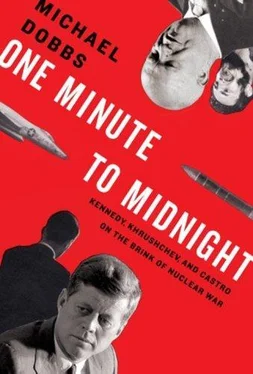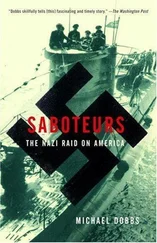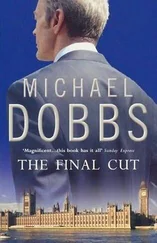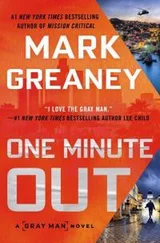Read in conjunction with astronomical maps, the charts confirm the personal recollections of Maultsby and the navigator who helped him return to Alaska. But they also undermine the widely accepted official assumption that he ended up over the Soviet Union because he took a wrong turn over the North Pole. In fact, they suggest that he never reached the Pole, and instead ended up somewhere in the vicinity of northern Greenland or the Queen Elizabeth Islands of northern Canada.
The principal problem with the official version is an unexplained hour and a quarter of extra flying time. At 75,000 thousand feet, a U-2 was obliged to fly at constant speed of around 420 knots. Had Maultsby maintained this speed and made a wrong turn at the North Pole, he would have crossed over Soviet territory around 10:45 a.m. Washington time, rather than 11:59 a.m. The extra flying time equates to a detour of around six hundred miles.
The most likely explanation for the aberration is that his compass interfered with his navigational computations. In the vicinity of the North Pole, a compass is useless. Pilots had to rely on the stars, a gyro to keep them on a fixed heading, and accurate calculations of time and distance flown. According to another U-2 pilot, Roger Herman, Maultsby told friends that he forgot to unchain his gyro from his compass, an error that would have had the effect of pulling him in the direction of the magnetic North Pole, then located in northern Canada.
According to the State Department chart, Maultsby entered Soviet territory not from the north, but from the northeast. This is consistent with his recollection that he observed the Belt of Orion off the left nose of his plane. Had he been flying southward from the North Pole, he would have seen Orion off the right nose of the plane.
Gradually, the truth sank in: Vera interview.
The CIA later said: Richard Helms memo, November 13, 1962, JFKARC.
“operationally infeasible”: Chronology of the Mathambre Mine Sabotage Operation, November 14, 1962, JFKARC. See also Harvey memo to Director of Central Intelligence, November 21, 1962, JFKARC. In his memos, Harvey said that the plan called for “only two immediate alternate rendezvous, on 22 and 23 October,” i.e., four or five days after the saboteurs were dropped off. A “final pickup operation,” in the event that these rendezvous were missed, was set for November 19. This chronology makes little sense. Everybody understood that it was likely to take longer than four days to carry out the sabotage operation. During the previous, unsuccessful attempt to target the copper mine, in early October, a sabotage team led by Orozco was retrieved after five days in Cuba. The October 22-23 pickup may have been designed for a separate arms-caching operation, and as a fallback in case Orozco and Vera failed to make it as far as Matahambre. There is no reason to doubt Vera’s insistence that the main rendezvous date was between October 28 and 30, with a final fallback date of November 19.
On the morning of Tuesday: Cuban interrogation report, November 8, 1962, Havana 2002, Documentos de los Archivos Cubanos, Vera interview.
It was clear from the photographs: Blue Moon mission 5035, November 2, 1962, NARA.
“within 1 1/ 2to 2 hours”: Moscow telegram 1115 to Secretary of State, October 28, 1962, SDX.
With time running out: Troyanovsky, 252; Taubman, 575-6.
sounded to him like a “shameful retreat”: Sergei Khrushchev, 367.
“If possible”: Troyanovsky, 253.
“I feel like a new man”: O’Donnell and Powers, 341; Beschloss, 541.
“I could hardly believe”: Alsop and Bartlett, “In Time of Crisis,” Saturday Evening Post, December 8, 1962.
“felt like laughing”: Wilson OH, JFKL.
“a rose growing out”: Abel, 180.
between “one in three”: Sorensen, Kennedy, 705.
“a charade”: JCS Poole notes.
“an insincere proposal”: NSAW Cuba.
“It’s the greatest defeat”: Beschloss, 544.
“Son of a bitch!”: Franqui, 194, Thomas, 524. For the Castro account, see Blight et al., Cuba on the Brink, 214.
Alekseev had been up late: Alekseev interview, CNN CW.
The report reaching the North American: For a full account of this incident, see Sagan, 127-33. Sagan and other writers have given an apparently erroneous time: NORAD logs give the time as 1608Z, or 11:08 a.m. Washington time—Sagan Collection, NSAW.
“Everyone knows who were”: Summary record of ExComm meeting, FRUS, Vol. XI, 283.
“I don’t think either of them”: Sorensen interview, CNN CW.
“a victory for us”: Reeves, 424.
“At last, I am going”: Instructions to Dobrynin, October 28, 1962, NSAW; Dobrynin, 89-90.
“All of them?”: Gribkov and Smith, Operation ANADYR, 72.
“Nikita, Nikita”: Mario Vargas Llosa report, Le Monde, November 23, 1962.
“watches, boots”: CIA memorandum, The Crisis: USSR/Cuba, November 10, 1962, CREST.
“Some experts and technicians”: Telegram from Czechoslovak ambassador, October 31, 1962, Havana 2002, vol. 2.
“First you urged me”: Yesin et al., Strategicheskaya Operatsiya Anadyr, 57.
“to tighten your belts”: K. S. Karol, Guerrillas in Power (New York: Hill & Wang, 1970), 274.
“This is the night”: RFK, 110.
“dazzled the world”: Arthur M. Schlesinger, Jr., A Thousand Days (Boston: Houghton Mifflin, 1965), 851.
“Adlai wanted a Munich”: Alsop and Bartlett, “In Time of Crisis,” Saturday Evening Post, December 8, 1962.
“a dove from the start”: Schlesinger, Robert Kennedy and His Times, 529.
“a thought of breathtaking ingenuity”: Schlesinger, A Thousand Days, 828.
“the enormous tension that gripped us”: Dobrynin, 83.
Most books on the missile crisis: An exception is The Limits of Safety (1993), by Scott Sagan, a study about accidents involving nuclear weapons.
“100 per cent successful”: History of 4080th Strategic Wing, October 1962, FOIA.
“an inner sense of confidence”: Alsop and Bartlett, “In Time of Crisis.”
a policy of “progressive squeeze-and-talk”: Kaplan, 334.
“deeply influenced”: Clark M. Clifford, Counsel to the President (New York: Random House, 1991), 411.
“Very gung-ho fellows”: Michael Charlton and Anthony Moncrieff, Many Reasons Why: The American Involvement in Vietnam (New York: Hill & Wang, 1978), 82, cited in Eliot A. Cohen, “Why We Should Stop Studying the Cuban Missile Crisis,” The National Interest (Winter 1985-86).
“You got away with it”: Reeves, 424.
“bright and energetic”: Schlesinger, Robert Kennedy and His Times, 548.
“incompatible with Soviet practice”: NIE 85-3-62, September 19, 1962; for postmortem, see February 4, 1963, memo from President’s Foreign Intelligence Advisory Board in McAuliffe, 362-71.
“We all inhabit”: JFK Commencement Address at American University, June 10, 1963.
“plain dumb luck”: Reeves, 425; see also “Acheson Says Luck Saved JFK on Cuba,” WP, January 19, 1969.
Michael Dobbs was born in Belfast, Northern Ireland, and educated at the University of York, with fellowships at Princeton and Harvard. He is a reporter for The Washington Post, where he spent much of his career as a foreign correspondent covering the collapse of communism. His Down with Big Brother: The Fall of the Soviet Empire was a runner-up for the 1997 PEN award for nonfiction. He lives in Bethesda, Maryland.
Saboteurs: The Nazi Raid on America
Читать дальше












